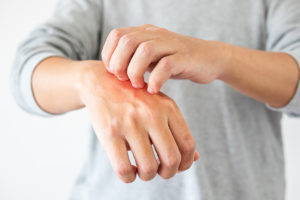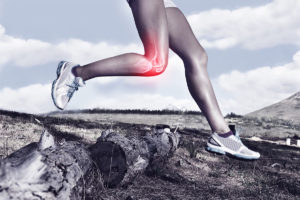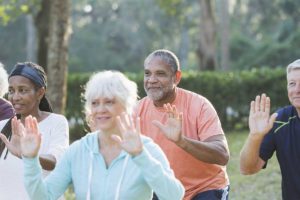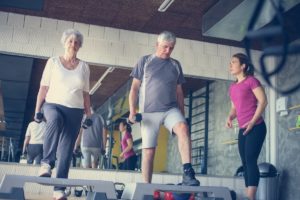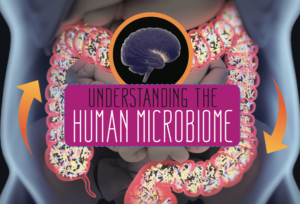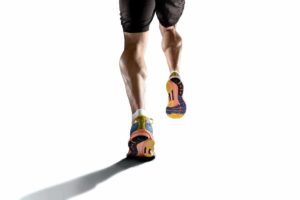Chronically Ill
Stretching for Hypertension Improvements
Regular stretching for hypertension may be more effective than brisk walking in those with high-normal blood pressure, according to research.
Training Cancer Patients
New findings suggest that training cancer patients with both high-intensity and low- to moderate-intensity exercise is beneficial.
The Psoriasis-Fitness Connection
Young men with the lowest fitness levels had a 35% higher risk of developing psoriasis than those with the highest fitness levels.
Inflammation Reduced by Muscle Cells
Research offers insight into how much and what type of exercise may help reduce systemic inflammation and promote a healthy immune system.
Inflammation: Obesity, Diabetes, Aging and Exercise
Inflammation is an essential defense system for enhancing survival. Learn how the inflammation process is linked to obesity, diabetes, aging and exercise.
Heart Health for People With Type 2 Diabetes
One negative consequence of type 2 diabetes is damage to the heart. Researchers recently compared the effects of exercise to determine risk.
Tai Chi Boosts Mood for People With Heart Disease
Tai chi, a form of “meditation in motion,” is linked with better mood and quality of life for people with heart disease, according to a new research review.
HIIT Helps People With Asthma
Researchers found that a HIIT program helped people with asthma experience clinically significant improvements in controlling the condition.
Fitness for People With Fibromyalgia
Do you work with a client who has fibromyalgia? Here’s some good news: In a study of 466 women with fibromyalgia, researchers found that those with higher levels of overall fitness also experienced higher health-related quality of life (HRQoL). Spanish researchers from various institutions conducted the study to determine which components of fitness would be most valuable to target in people with fibromyalgia.
The Science of Pilates Research
When Victor Sanakai was playing tennis for the Auburn University Montgomery National Championship team, he thought he was going to need rotator cuff surgery. But first he sought the advice of Michele Olson, PhD, a Pilates researcher who works with student athletes.
Olson, a senior clinical professor of sport science at Huntingdon College in Montgomery, Alabama, suggested Sanakai try Pilates exercises for the shoulders, upper back and abdominals.
Inspiring Functionality
CLIENT: Erika Miller
PERSONAL TRAINER: Michele DeJesus, MS (movement therapy), PhD (nutrition)
LOCATION: Lexington Athletic Club, Lexington, Kentucky
Obesity Boosts Melanoma Risk
Add this to the list of dangers associated with obesity: New research from Sweden suggests obesity is a risk factor for developing skin cancer, and weight loss—in this case via bariatric surgery—could reduce the risk of malignant melanoma skin cancer, in particular, by 61%.
The study included 2,007 bariatric surgery patients and 2,040 nonsurgery controls whose skin cancer incidence was monitored for 18 years. Aside from the significantly lower risk of developing malignant melanoma, the surgery group saw a 42% reduction in skin cancer risk in general.
The Optimal Amount of Exercise for Heart Health
Arterial stiffness, which increases with sedentary living, is associated with higher risk of heart disease. It’s well known that exercise can help, but how much—or how little—is enough?
“While near-daily, vigorous lifelong (>25 years) endurance exercise training prevents arterial stiffening with ageing, this rigorous routine of exercise training over a lifetime is impractical for most individuals,” noted the authors of a new study, which aimed to determine the least amount of exercise necessary to reduce arterial stiffness.
Plant Foods Are Good for Our Gut Bugs
Our bodies host a huge population of microorganisms, dubbed the human microbiome. In recent years, the makeup of critters in our guts has been linked to a plethora of conditions, including depression, heart disease and obesity. And now bug-friendly scientists at the University of California, San Diego School of Medicine have presented initial findings from the American Gut Project, a crowdsourced initiative that analyzes people’s survey responses and fecal samples to better understand how things like diet, lifestyle and disease affect the human microbiome.
Exercise and the Gut Microbiome
New research suggests that endurance exercise positively affects the gut microbiome, but only for lean individuals and only for as long as exercise continues. Researchers at the University of Illinois at Urbana-Champaign conducted the study with 32 sedentary men and women—some lean, some obese. The purpose was to explore the impact of endurance exercise on the composition, functional capacity and metabolic output of gut microbiota. Investigators collected samples from the subjects before and after 6 weeks of exercise, then after 6 weeks of no exercise.
The Importance of Exercise for Addiction Recovery
Substance use disorder can wreak havoc on people’s lives. Fitness activity can be a
transformative way for those in recovery to heal, rebuild their lives and find a community of healthy supporters.
According to a study published in Mental Health and Physical Activity in 2011, patients with substance use disorder who exercised while in recovery reported feeling greater strength, improved health, a sense of accomplishment, and increased confidence about staying clean and sober.
Understanding the Human Microbiome
Exploration of the human microbiome is leading to revolutionary changes in health, wellness and disease management.
The Best Exercise for Alzheimer’s Disease
If you were asked to choose among cardiovascular exercise, resistance training and a combination of both to help people with Alzheimer’s disease, what choice would you make?
Researchers from the University of Connecticut wanted to understand the effects of exercise—if any—on cognitive decline in those at risk of or diagnosed with Alzheimer’s. The scientists performed a meta-analysis of 19 studies (23 exercise interventions) featuring 1,145 adults aged 77 ± 7.5 years.
Learning About Lymph
Any routine visit to the physician includes the familiar cold-hands-under-the-earlobes lymph node check. But how often do you think about what the doctor is checking for or how important the lymphatic system is? And have you told your clients that physical activity plays a key role in supporting this crucial system?
Exercise’s Impact on Cancer
There are three ways to look at battling cancer. For those who don’t have it, lowering risk is the primary goal. For those who’ve had it, successfully recovering and, of course, reducing the chances of recurrence are of utmost importance. For those who currently have it, the priorities are getting rid of it and minimizing the harmful effects that both the disease and the treatment have on the body. Exercise has been shown to help with all three.


